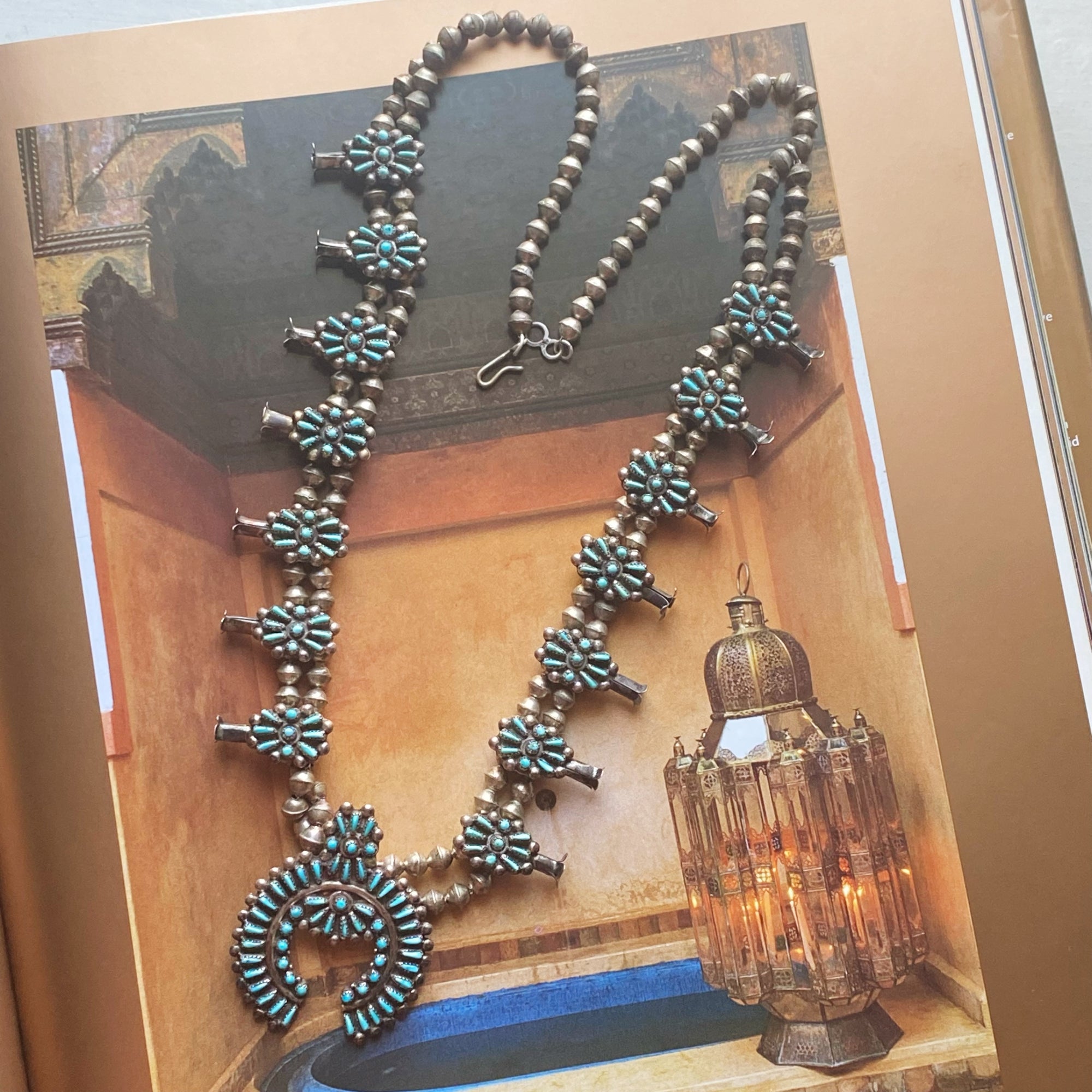
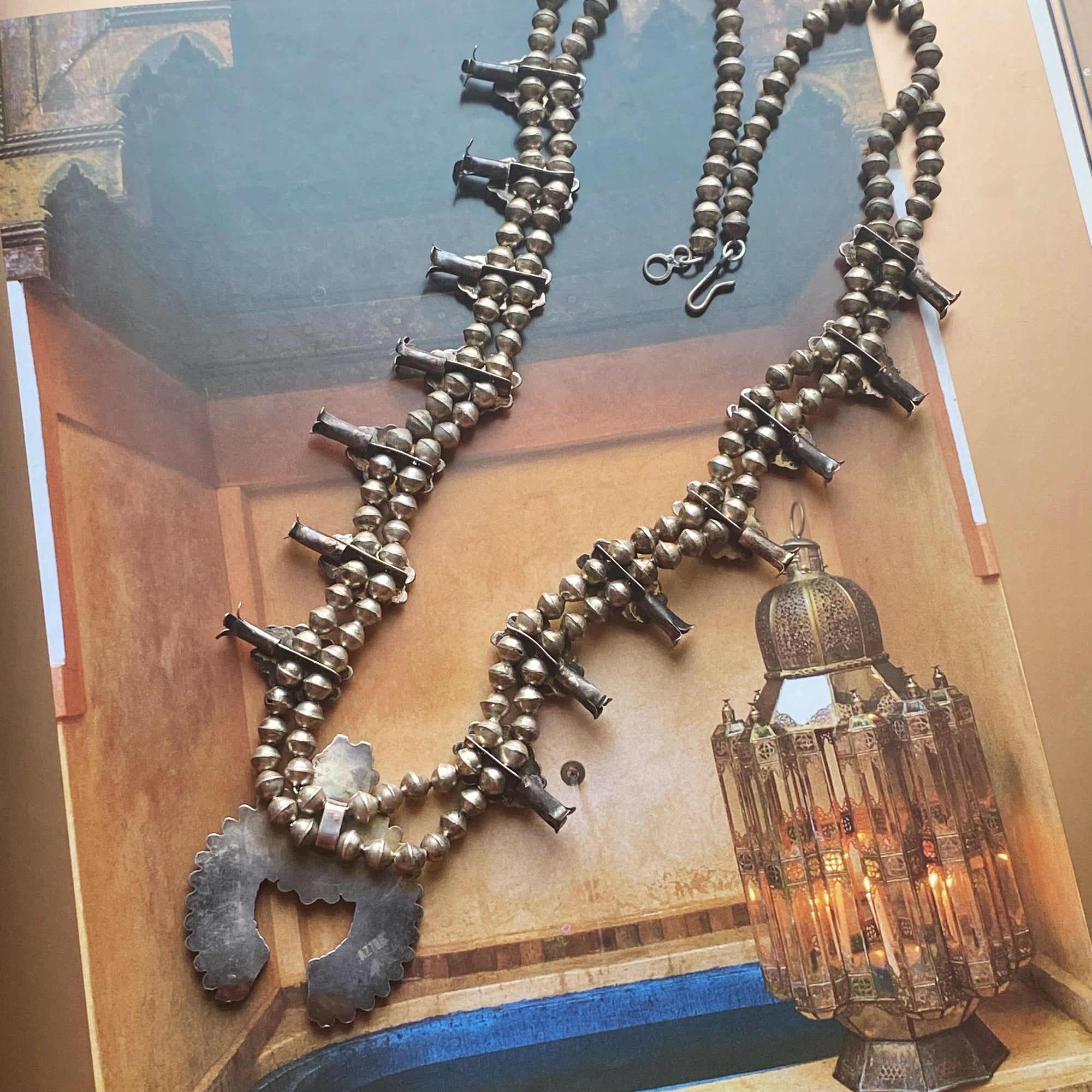
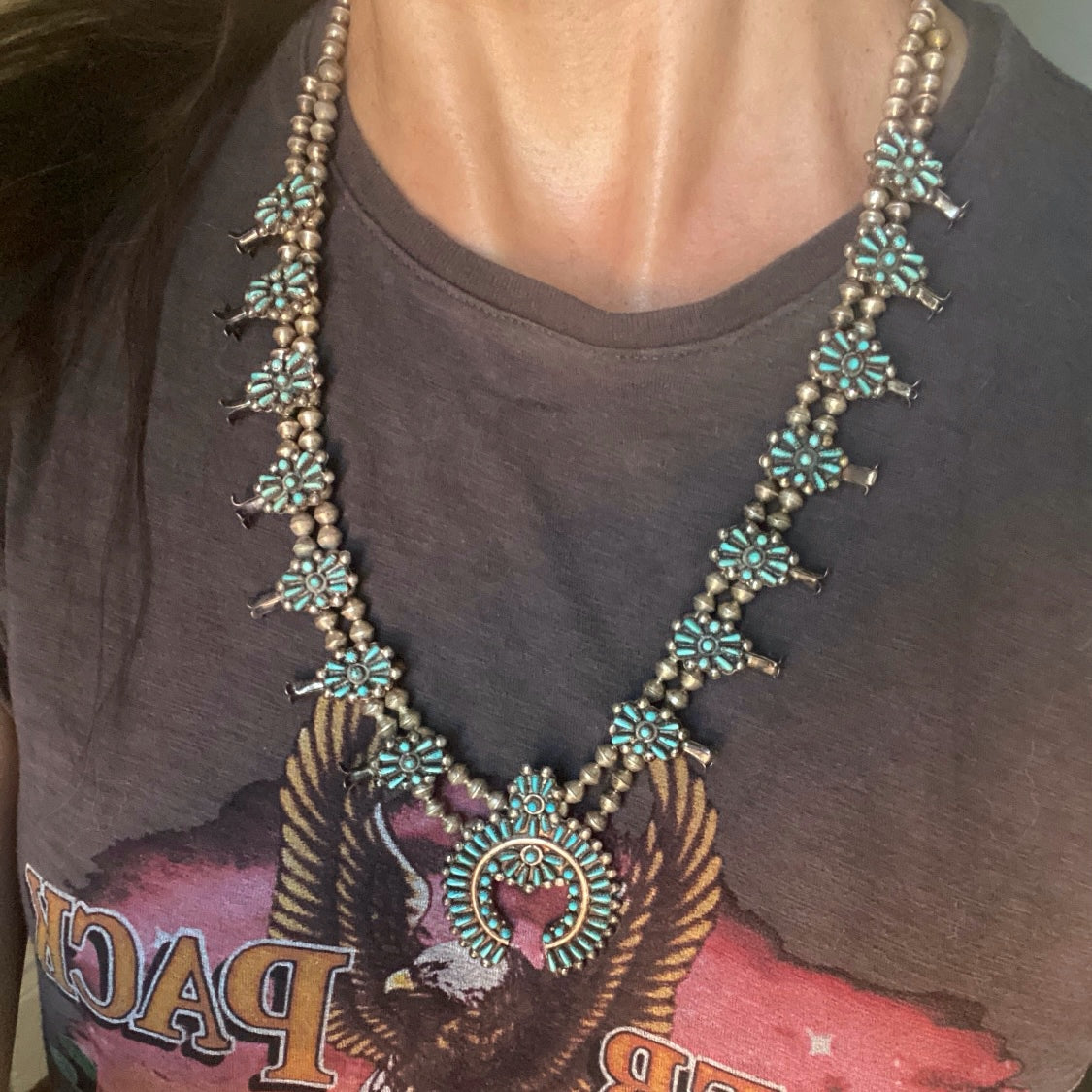
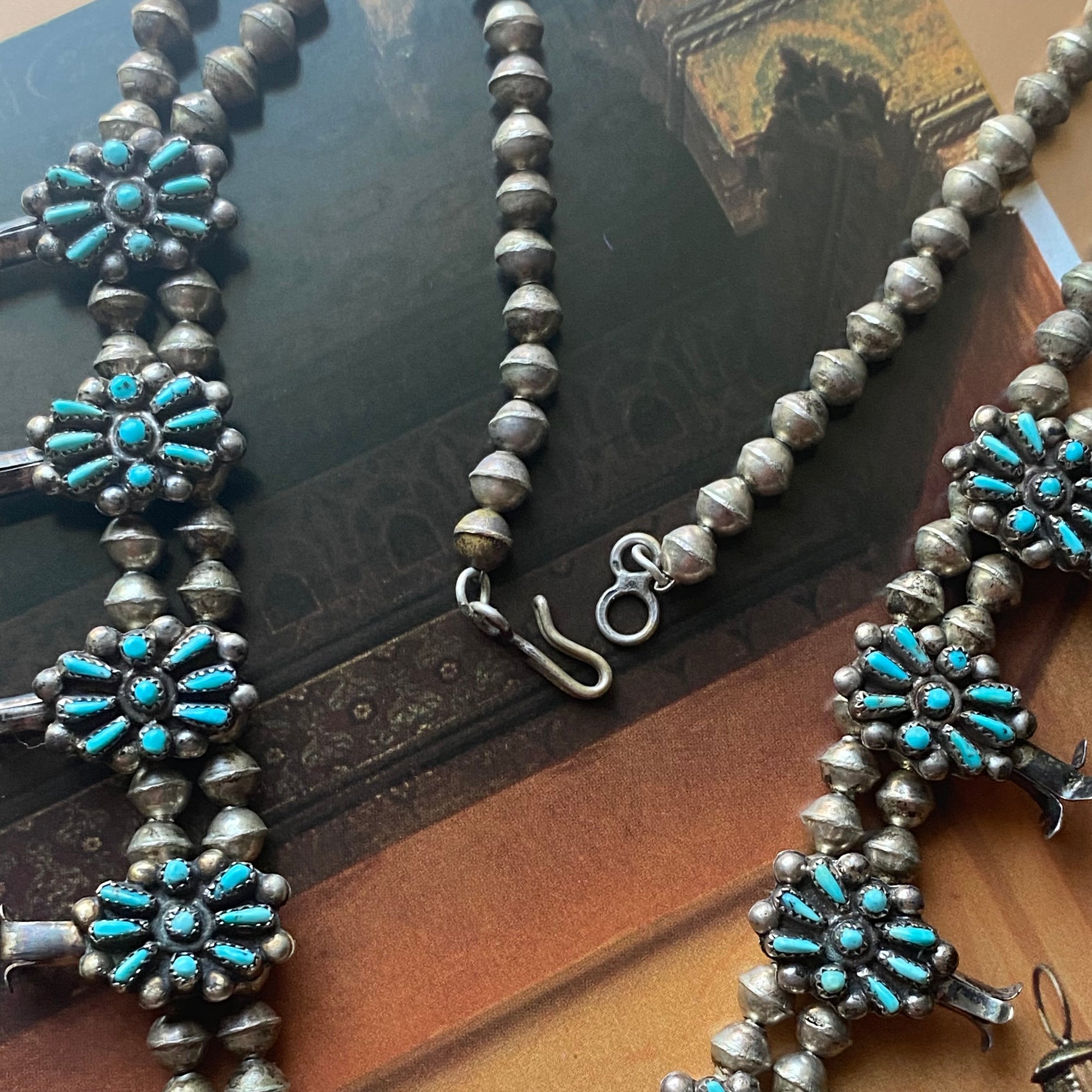
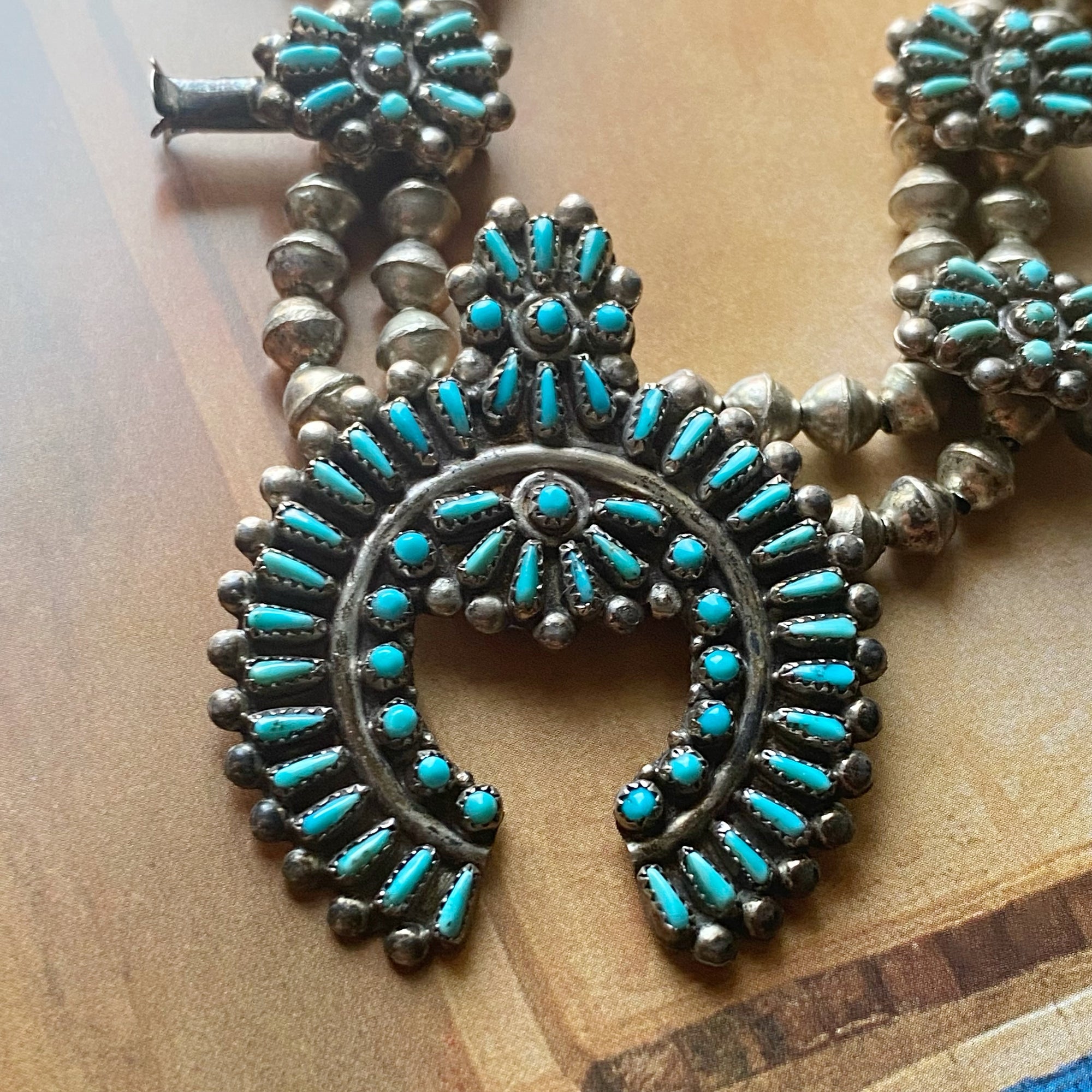
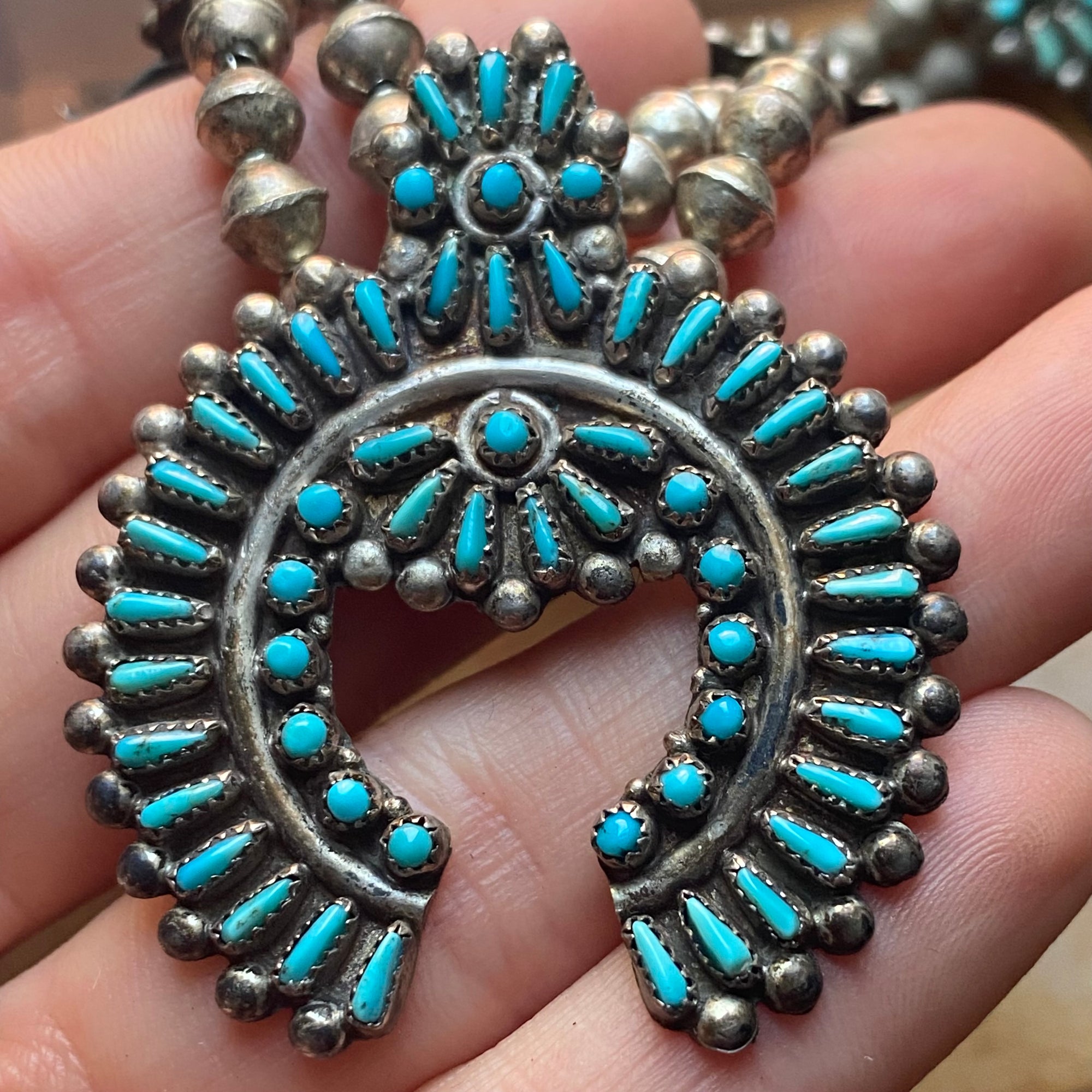
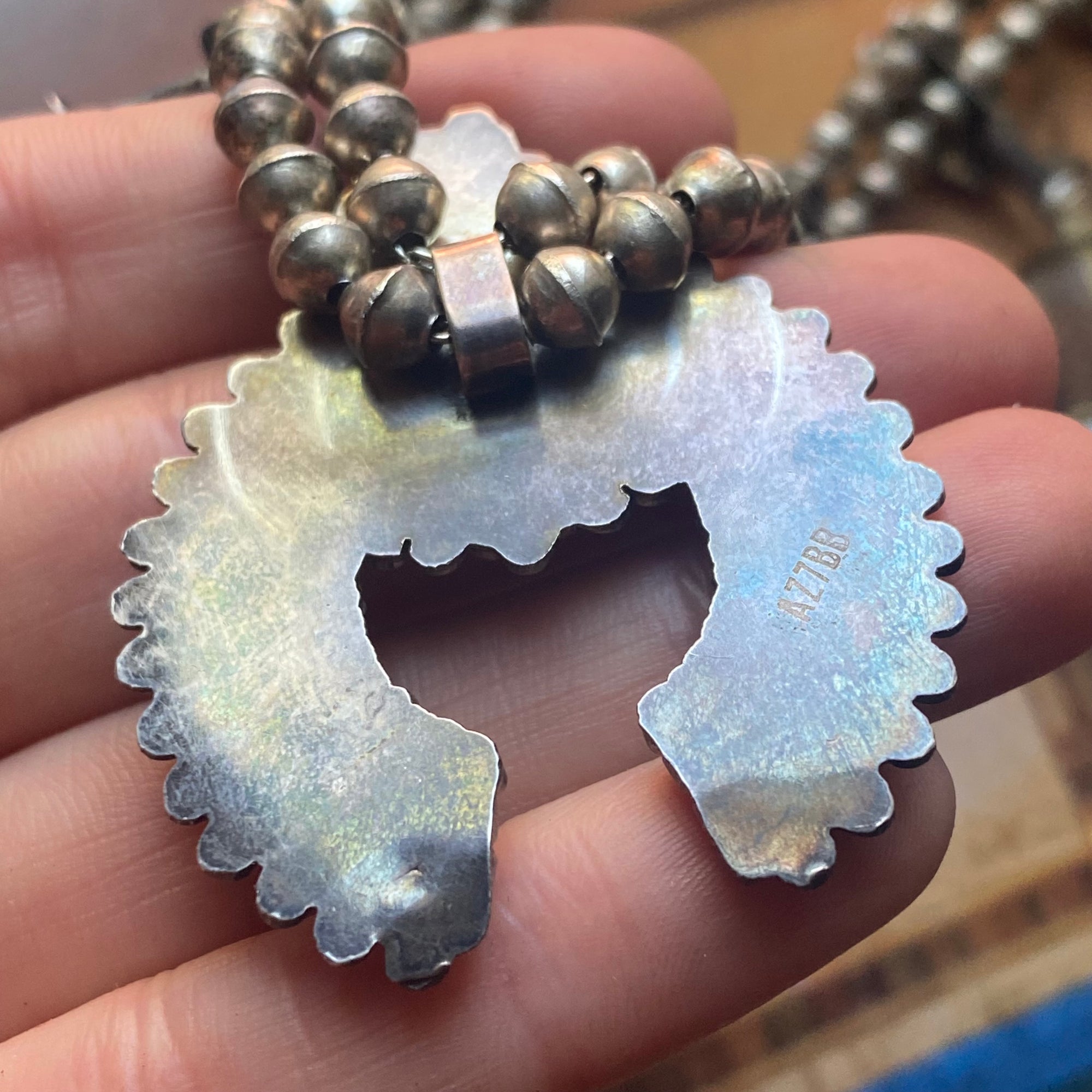
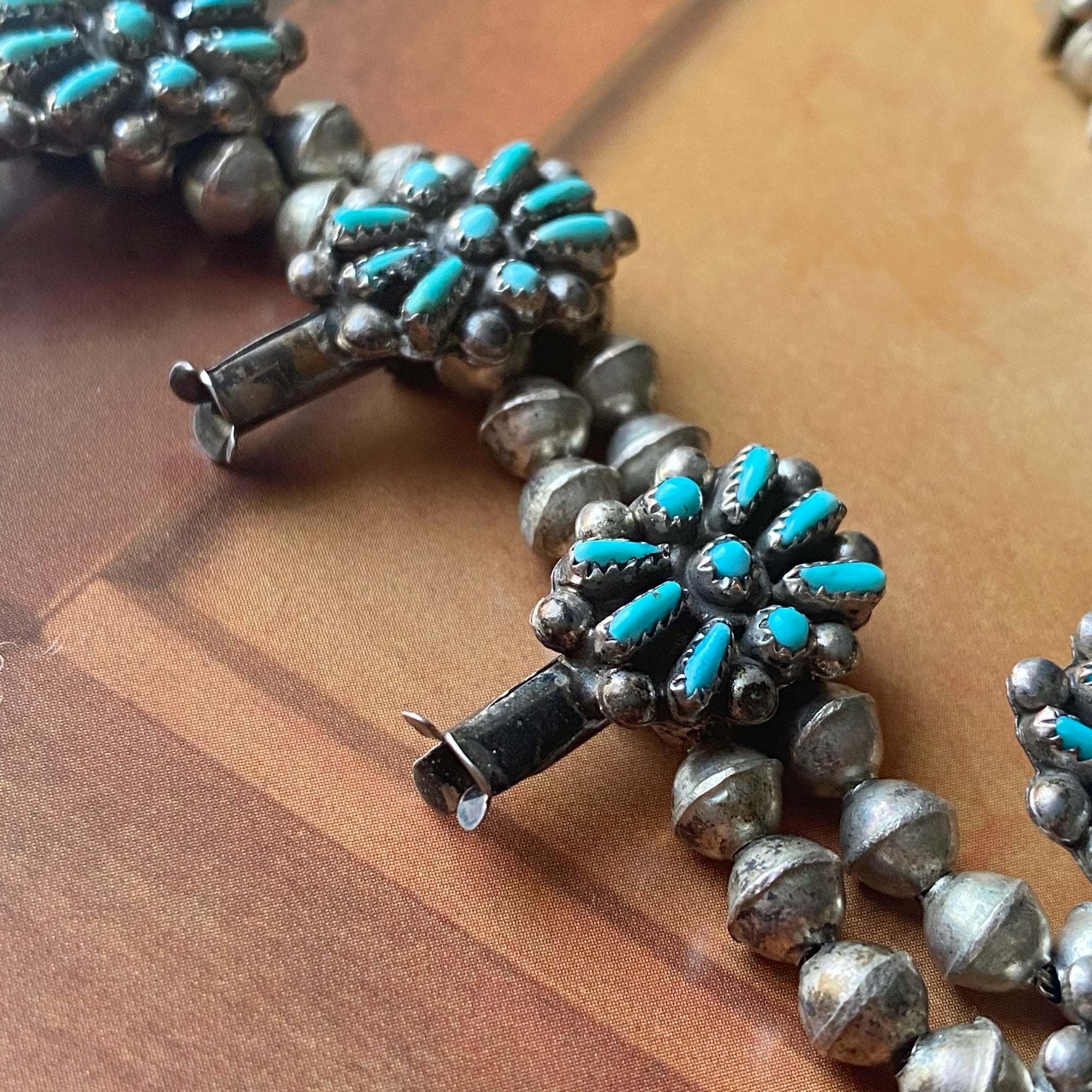
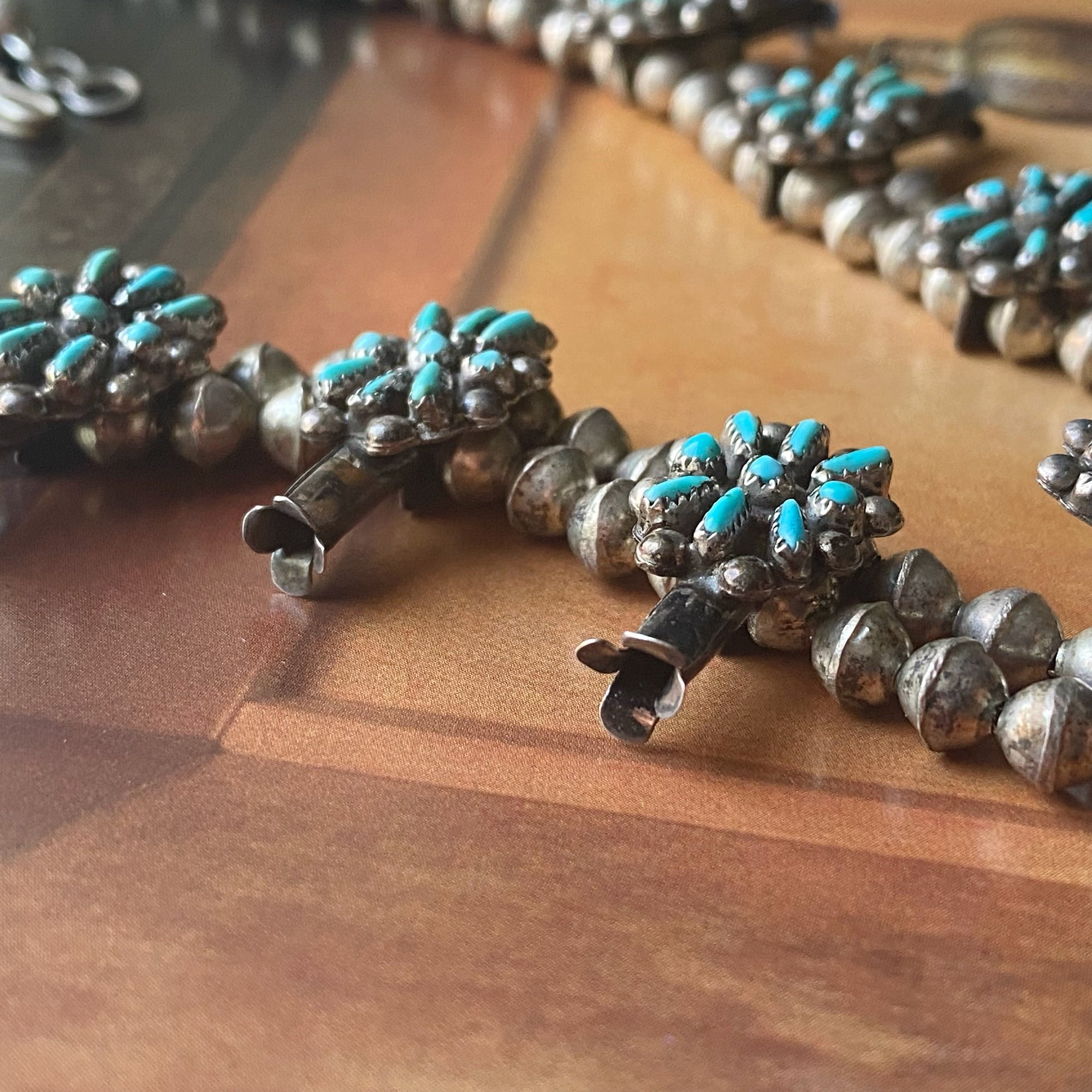
Vintage Petit Point Turquoise Zuni Squash Blossom Necklace - Silver
Squash blossom necklaces originated in the late 1870s or early 1880s after the native people came into contact with Spanish Mexicans. It is believed that the Navajo were the first tribe to adopt the design but, by the early 1900s, the art form had spread to neighboring tribes, including the Zuni and the Pueblo.
Some believe that the Navajo created the squash blossom after seeing the pomegranate design frequently used as decoration by the Spanish people, including on the buttons of the soldiers’ uniforms. (In parts of Spain, the pomegranate is a revered fruit; in particular, it is the heraldic symbol of the city of Granada, which is also the Spanish word for the fruit known in English as pomegranate.) Meanwhile, others believe that the squash blossom is exactly that - a design inspired by the flowery part of the squash plant which are one of the crops that Native Americans relied on in the Southwest.
The name of the necklace grew out of the one type of bead whose name in the Navajo language translates to “bead which spreads out". While the entire necklace has taken its name from one type of bead, the classic squash blossom necklace actually has three distinct parts: the plain round beads; the round beads with the “petals,” horseshoe or crescent-like pendant at the bottom called the Naja. “Naja” is the name the Navajo gave to a symbol believed to have originated in the Middle East in ancient times. Like many symbols, it was created as a talisman for protection, with the Moors affixing it to their horses’ bridles to ward off the evil eye.
In early examples of squash blossom necklaces, the Najas are strictly silver. As designs evolved, silversmiths began adding turquoise and even coral to them. The Naja is also representative of the womb, and when a squash blossom necklace features a single turquoise nugget suspended from the Naja, it is often interpreted to be symbolic of a child in the womb.
All my pieces ship from my studio in Toronto, ON. Please read shop policies before purchasing and/or should you have any questions.
You can view my newest pieces on Instagram at @black.umbrella.jewelry
